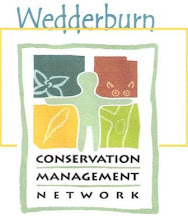I have now attended two of the soils forums dealing with Farming for Sustainable Soils which have been hosted by the NACCM in Bendigo. Both forums have been excellent.
The Farming for Sustainable Soils project is part of a response to what is recognised as a major problem in Australian agriculture i.e. the degradation of soils.
“Traditional land management practices leave the land devoid of vegetative cover at critical times of the year when it is more prone to both wind and water erosion. Changes in the water balance of landscapes enhance the negative impacts of traditional agricultural practices. These place pressures on the soil that lead to loss of soil structure and resilience in the face of erosive winds and water. The loss of soil structure is accelerated by the loss of soil organic matter”.
“The altered climatic conditions present enormous challenges to today’s farmers as they struggle to adopt new farming practices more in tune with new circumstances”. Quotes by Phil Dyson project manager. These are echoes of the same messages given in the article above by Wendy.
My initial reason for attending these forums was to look for a link between this problem and the conservation of biodiversity. A possible answer to my enquiry seemed to lie in listening to one of the presenters from the 2010 forum, Dr Christine Jones (CJ) and Colin Seis, one of the originators of the technique of pasture cropping, in a talk he gave at Serpentine.
“Carbon is the currency for most transactions within and between living things. Nowhere is this more evident than in the soil where carbon produced by green plants is traded for nutrients from fungi (Mycorrhizal) and bacteria in the soil. Mycorrhizal fungi and associative bacteria are very strongly inhibited by excessive soil disturbance and the high levels of water-soluble phosphorus and nitrogen commonly used in modern agriculture. The structural degradation of agricultural soils, accompanied by mineral depletion in food, has largely been the result of the inhibition of this natural carbon pathway.” - CJ
Colin Seis, in referring to his more sustainable farming technique had mentioned “there is growing evidence, anecdotal and scientific, to support improvement in soil health, improved water use efficiency and general improvement in ecosystem function”. It would appear then that certain farming practices which are detrimental to the composition and structure of soil lead to a break or inhibition in a natural biological chain of events. Some have even suggested that this break at the soil level may be responsible for such things as the decline in certain bird populations in parts of Victoria. Considering this information it would seem that soil condition is an extremely important aspect with respect to the conservation of biodiversity in the soil and subsequently at higher levels.
In view of these statements it was very encouraging to note the enthusiasm of the assembled groups at both forums, especially young farmers, as those involved in the soil project presented their progress and successes to date in changing to more sustainable farming practices.
Article - Michael Moore

No comments:
Post a Comment